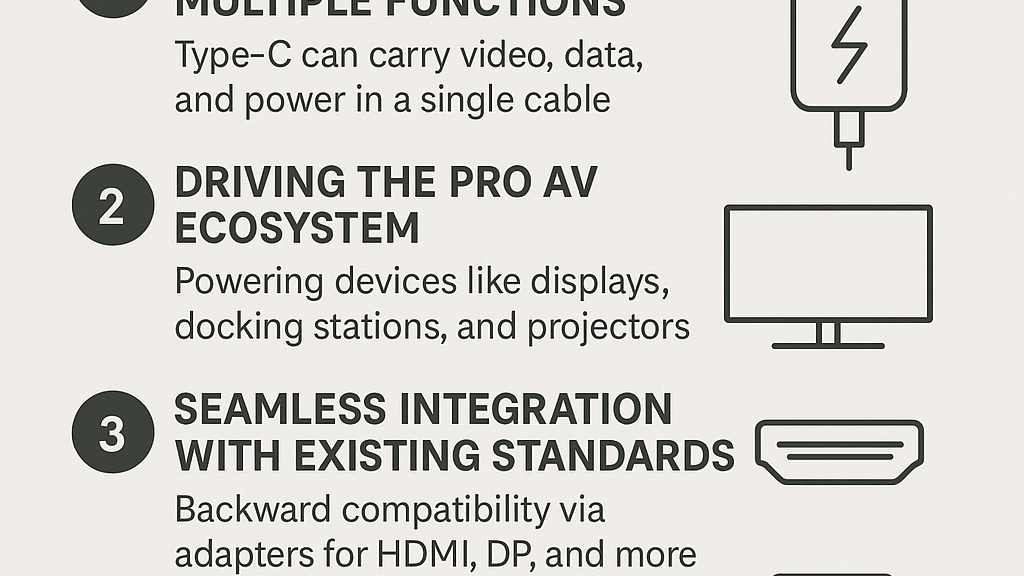Table Of Content
Table Of Content
In the realm of audio-visual connectivity, HDMI (High-Definition Multimedia Interface) stands tall as the standard bearer, facilitating seamless transmission of high-quality audio and video signals. As technology advances, successive iterations of HDMI standards have emerged, each bringing significant enhancements and catering to evolving consumer demands. Let’s delve into the key differences and future market trends of HDMI 1.4, HDMI 2.0, and HDMI 2.1:
HDMI 1.4: HDMI 1.4, introduced in 2009, marked a significant leap forward in multimedia connectivity. Its key features include support for 4K resolution at 30Hz, 3D video, and an Audio Return Channel (ARC) for streamlined audio connectivity. Additionally, HDMI 1.4 introduced Ethernet support for sharing an internet connection between connected devices. It found extensive use in home entertainment systems, gaming consoles, and computer displays. However, its bandwidth limitations hindered its ability to handle higher resolutions and refresh rates efficiently.
HDMI 2.0: Building upon the foundation laid by HDMI 1.4, HDMI 2.0 emerged in 2013 with notable improvements. It doubled the maximum bandwidth to 18 Gbps, enabling support for 4K resolution at 60Hz and dynamic HDR (High Dynamic Range) for enhanced contrast and color depth. HDMI 2.0 also introduced support for wider color gamuts and increased audio channel capabilities. These advancements made it ideal for high-end home theaters, gaming setups, and professional displays, meeting the demands of consumers seeking immersive multimedia experiences.
HDMI 2.1: The latest iteration, HDMI 2.1, debuted in 2017, ushering in a new era of connectivity and performance. With an unprecedented bandwidth of 48 Gbps, HDMI 2.1 supports resolutions up to 10K and frame rates up to 120Hz, paving the way for ultra-high-definition gaming, VR applications, and cutting-edge display technologies. Its enhanced Variable Refresh Rate (VRR) and Quick Frame Transport (QFT) capabilities deliver smoother gameplay and reduced latency, catering to the needs of avid gamers and content creators alike. Moreover, HDMI 2.1 introduces eARC (Enhanced Audio Return Channel) for uncompressed, high-fidelity audio transmission, ensuring an immersive audiovisual experience.
Future Market Trends: As consumer demand for higher resolutions, faster refresh rates, and immersive multimedia experiences continues to grow, HDMI 2.1 is poised to dominate the market in the coming years. Its unparalleled bandwidth and advanced features make it the preferred choice for next-generation displays, gaming consoles, and media players. However, HDMI 1.4 and HDMI 2.0 will still find relevance in entry-level and mid-range devices, catering to budget-conscious consumers and applications where lower bandwidth suffices.
In conclusion, the evolution of HDMI standards reflects the relentless pursuit of innovation in the audio-visual industry. From the foundational capabilities of HDMI 1.4 to the groundbreaking advancements of HDMI 2.1, each iteration has pushed the boundaries of connectivity, setting the stage for a future defined by unparalleled multimedia experiences.
Understanding Conductors: BC, OFC, and CCS in Audio-Visual Cables
In the world of audio-visual connectivity, the choice of conductor material in cables significantly impacts the performance, durability, and overall quality of the connection. Three common types of conductors are BC (Bare Copper), OFC (Oxygen-Free Copper), and CCS (Copper-Clad Steel). Let’s explore the differences between these conductors and their respective influences on product performance:
Bare Copper (BC): Bare Copper (BC) is a highly pure and uncoated copper conductor. Its main attributes are:
- Conductivity: BC has excellent electrical conductivity, ensuring minimal signal loss and high fidelity in audio and video transmission.
- Durability: Copper is naturally resistant to corrosion, which helps maintain signal integrity over time.
- Flexibility: BC cables are typically flexible and easy to work with, making them suitable for various installations.
- Performance Impact: The high conductivity of BC results in reliable and clear signal transmission, making it a preferred choice for high-quality audio-visual applications.
Oxygen-Free Copper (OFC): Oxygen-Free Copper (OFC) is refined to reduce the oxygen content to less than 0.001%, resulting in a purer copper conductor. Key characteristics include:
- Enhanced Conductivity: OFC offers even better conductivity than standard BC due to its higher purity, further reducing signal loss.
- Improved Durability: The reduced oxygen content minimizes the risk of oxidation and corrosion, ensuring longer-lasting performance.
- Superior Sound Quality: OFC is often favored in high-end audio applications because it can deliver cleaner, more accurate sound reproduction.
- Performance Impact: The superior conductivity and reduced oxidation of OFC make it ideal for premium audio-visual systems, where maintaining the highest signal integrity is crucial.
Copper-Clad Steel (CCS): Copper-Clad Steel (CCS) combines a steel core with a thin layer of copper. Its primary features are:
- Cost-Effectiveness: CCS is generally less expensive than pure copper options, making it a budget-friendly alternative.
- Mechanical Strength: The steel core provides greater tensile strength, which can be beneficial in applications requiring robust, durable cables.
- Lower Conductivity: Despite the copper coating, the overall conductivity of CCS is lower than that of pure copper conductors.
- Performance Impact: CCS cables are more suited for applications where cost is a major concern and where the signal loss can be tolerated, such as in certain data transmission contexts or lower-end audio-visual setups.
Impact on Product Performance
The choice of conductor material in cables directly affects several aspects of product performance:
- Signal Quality: BC and OFC provide superior signal quality due to their high conductivity, making them ideal for high-definition audio and video transmission. CCS, with its lower conductivity, may result in more signal loss, affecting the clarity and fidelity of the transmitted signal.
- Durability and Longevity: OFC and BC are less prone to oxidation and corrosion, ensuring consistent performance over time. CCS, while mechanically strong, may suffer from corrosion at the steel core if the copper coating is compromised.
- Cost vs. Performance: OFC and BC, while offering better performance, come at a higher cost. CCS provides a cost-effective solution but at the expense of signal quality and overall performance.
In conclusion, the choice between BC, OFC, and CCS conductors depends on the specific needs and priorities of the application. For high-end audio-visual systems where signal integrity is paramount, OFC and BC are the best choices. For applications where budget constraints are significant, and some compromise on performance is acceptable, CCS can be a viable option. Understanding these differences helps in selecting the right cable to match the performance requirements and budget of the project.
Stranded vs. Solid Wire: Differences and Impact on Product Performance
In the realm of audio-visual connectivity, the internal structure of the cable conductors can significantly influence the performance and application suitability of the cable. Conductors can be either stranded (multi-strand) or solid (single-strand). Here, we will explore the differences between these two structures and their respective impacts on product performance:
Stranded Wire: Stranded wire consists of multiple thin strands of wire twisted together to form a single conductor. Its key characteristics include:
- Flexibility: Stranded wire is highly flexible, making it ideal for applications where the cable needs to be bent or moved frequently without breaking.
- Durability: The multiple strands help to distribute mechanical stress, reducing the risk of breakage when the cable is subjected to repeated bending or vibrations.
- Ease of Installation: The flexibility of stranded wire makes it easier to handle and install, especially in tight spaces or complex routing scenarios.
- Signal Transmission: Stranded wire can be slightly more resistant to electromagnetic interference (EMI) due to the skin effect, where high-frequency signals tend to travel on the surface of the conductor. The multiple strands provide more surface area.
- Performance Impact: Stranded wires are commonly used in applications requiring flexibility and durability, such as in portable devices, speaker cables, and patch cords. However, they may exhibit slightly higher resistance compared to solid wires, which can affect signal transmission over long distances.
Solid Wire: Solid wire consists of a single, continuous strand of wire. Its main attributes are:
- Rigidity: Solid wire is less flexible than stranded wire, making it more suitable for fixed installations where the cable will not be frequently moved.
- Lower Resistance: Solid wire generally has lower electrical resistance compared to stranded wire, which can result in better signal transmission and lower power loss over long distances.
- Simple Construction: The construction of solid wire makes it easier to produce and terminate, which can be beneficial in applications where a stable and reliable connection is crucial.
- Cost-Effective: Solid wire is typically cheaper to manufacture than stranded wire, making it a cost-effective choice for many installations.
- Performance Impact: Solid wires are ideal for permanent installations like in-wall wiring, structured cabling systems, and electrical outlets where the cables do not need to be flexible but must maintain a consistent and reliable signal.
Impact on Product Performance
The choice between stranded and solid wire structures affects several performance aspects of the cable:
- Flexibility and Handling: Stranded wire’s flexibility makes it preferable for movable or portable applications, whereas solid wire’s rigidity suits permanent, fixed installations.
- Durability: Stranded wire can withstand more bending and flexing without breaking, which is advantageous in dynamic environments. Solid wire, while more rigid, can be more prone to breaking if repeatedly bent.
- Electrical Performance: Solid wire offers lower resistance and slightly better signal integrity over long distances, making it suitable for high-performance applications where signal loss must be minimized. Stranded wire, while slightly higher in resistance, provides adequate performance for shorter runs and flexible installations.
- Installation Complexity: Stranded wire is easier to route through tight spaces and around obstacles due to its flexibility, while solid wire, being more rigid, may be easier to insert into connectors and terminals without fraying.
In conclusion, the choice between stranded and solid wire depends largely on the specific requirements of the application. For scenarios demanding flexibility, durability, and ease of handling, stranded wire is the optimal choice. Conversely, for fixed installations requiring stable, low-resistance connections, solid wire is more suitable. Understanding these differences helps in selecting the right cable structure to meet the performance and practical needs of the project.
Discover more: www.starfirecableshubs.com







